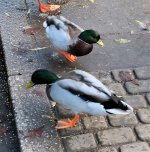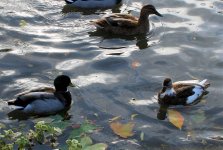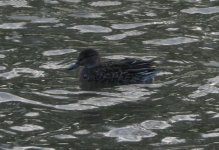Hi, our local duck pond has recently got a couple of what look like miniature mallards. The male looks just like a very small mallard with a stubby little beak but the female looks nothing like a female mallard. I have taken a pic of the male along side another male mallard so you can see the difference. They both have yellow rings on their legs so I assume they are escaped birds but is there a seperate species of these birds or are they just bred that way for a private collection?
The third picture is also on the pond and is also very small at the side of mallards, is it a young mallard or something else?
The third picture is also on the pond and is also very small at the side of mallards, is it a young mallard or something else?







